Build quality
A well-built harmonica ensures durability, longevity, and optimum playability. One example of a harmonica with exceptional build quality is the Hohner Marine Band Classic 1896 Harmonica. This harmonica features a wooden comb, which not only provides a warm and rich tone but also adds strength and stability to the instrument. Another harmonica renowned for its build quality is the Seydel Session Steel Harmonica. It is constructed with corrosion-resistant stainless steel reeds, allowing for a long-lasting and reliable performance even in challenging conditions. Additionally, the Lee Oskar Major Diatonic Harmonica offers a solid construction with a robust plastic comb, making it highly resistant to moisture and suitable for playing in a wide range of environments.
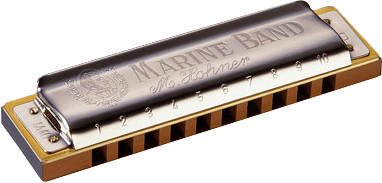
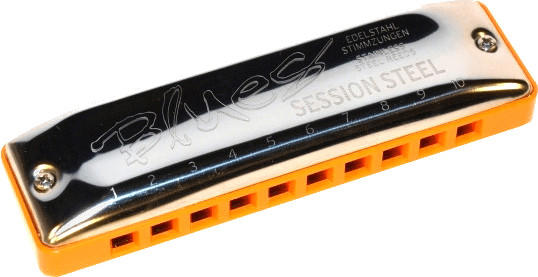
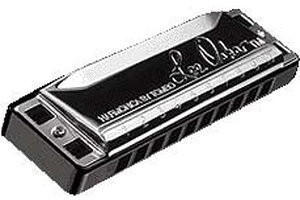
Type of harmonica (diatonic, chromatic, tremolo, etc.)
There are several types available in the market, each with its unique features and benefits. The most commonly used type is the diatonic harmonica, which is preferred by blues, country, and folk musicians. Some popular options in this category include the Hohner Special 20 and the Lee Oskar Major Diatonic Harmonica, both offering excellent playability and a wide range of keys to choose from.
For those looking for a more versatile instrument that can be played in various genres and keys, a chromatic harmonica is the way to go. Chromatic harmonicas, like the renowned Hohner Super Chromonica 270 Deluxe and the Suzuki SCX-48 Chromatix Series Harmonica, feature a button-activated sliding bar that allows players to play all 12 notes of the Western chromatic scale. This makes them an excellent choice for jazz, classical, and pop music.
Alternatively, musicians looking to add a touch of vibrancy to their performances might consider the tremolo harmonica. Tremolo harmonicas, such as the Hohner Echo Harp Tremolo Harmonica in C and the Suzuki Winner W24H Tremolo Harmonica, produce a unique double-hole mouthpiece design that produces a wavering effect by creating beats between two reeds tuned slightly apart. This type of harmonica is often utilized in traditional folk music and adds a beautiful, rich texture to any melody.
Other types of harmonicas include the octave harmonica, which produces a rich and full sound by combining two reeds with slightly different pitches with each note, as exemplified by the Hohner Meisterklasse Octave Harmonica and the Brendan Power Lucky 13 Metal Octave Harmonica. Additionally, the bass harmonica creates deep, resonant tones and is best suited for orchestral or ensemble music, with options like the Hohner 267 Deluxe Chromatic Bass Harmonica and the Suzuki SCH-24 Sub Bass Harmonica standing out.
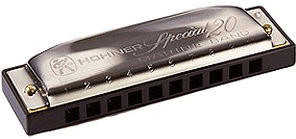

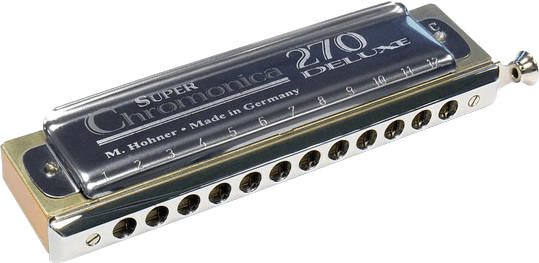

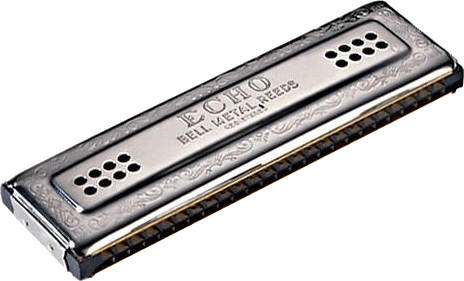


The type of harmonica you choose will greatly depend on the style of music you plan to play and the unique features that align with your playing technique.
Number of reeds
The number of reeds determines the range of notes the harmonica can produce and the complexity of the music you can play. Generally, harmonicas come in two varieties: diatonic harmonicas with 10 holes and chromatic harmonicas with 12 holes.
For those looking for a diatonic harmonica, an excellent option is the Hohner Special 20. With 20 reeds and a plastic comb, it offers a rich, vibrant sound and is great for blues, country, and folk music. Another great choice is the Lee Oskar Major Diatonic. It features 20 reeds and a sleek, black comb that adds visual appeal. This harmonica is well-regarded for its brilliant tone and is ideal for a wide range of musical genres.

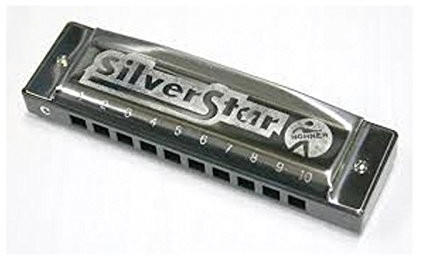
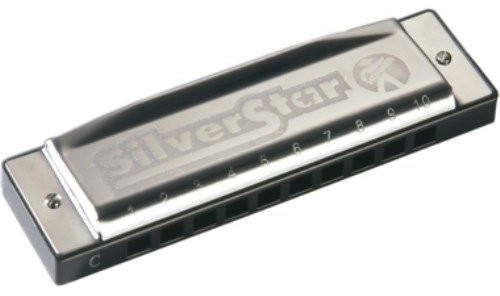
On the other hand, if you're interested in a chromatic harmonica, the Hohner Chromonica 280C is a top contender. With 28 reeds, this harmonica allows players to effortlessly switch between different notes and create intricate melodies. Another option is the Suzuki SCX-48 Chromatix. With 12 holes and 48 reeds, it offers an extensive tonal range and exceptional precision. These chromatic harmonicas are great for classical music, jazz, and advanced harmonica playing. Remember, the number of reeds is an essential factor that directly affects the music you can play, so choose wisely based on your musical preferences and skills.
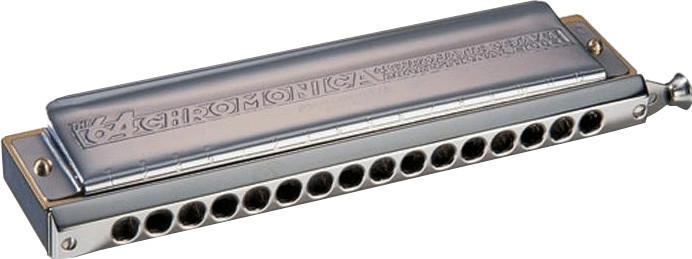

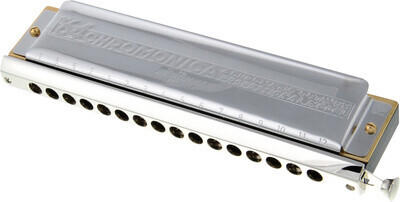
Key(s) available
The key of a harmonica refers to the base pitch it produces when played without any bending or overblowing techniques. Some common keys of harmonicas include C, G, A, D, and E. The choice of key depends on the style of music you intend to play and the instruments you plan to accompany. For example, if you're a beginner looking for a versatile harmonica, the Hohner Special 20 Key of C Harmonica or the Lee Oskar Major Diatonic Harmonica in C would be excellent options, as they are tuned to the popular key of C and can be used in a variety of genres, from folk and blues to pop and rock. If you're interested in exploring a different key, such as D or G, the Suzuki Bluesmaster MR-250 Harmonica in D or the Golden Melody Key of G Harmonica by Hohner would be worth considering as they offer excellent sound quality in their respective keys.




Tuning accuracy
Look for harmonicas that are specifically designed to provide precise tuning to ensure a well-balanced sound. One notable example is the Hohner Special 20. It features reeds made of brass with a special reed plate design, which promotes optimal tuning accuracy across the instrument. Another impressive option is the Lee Oskar Major Diatonic Harmonica. It is renowned for its precise tuning and is an excellent choice for both beginners and professionals alike. This harmonica utilizes replaceable reed plates and high-quality materials to deliver consistent tuning accuracy.
In the market, there are various segments of harmonicas based on their use and tuning accuracy requirements. For beginners, the Hohner Piedmont Blues Harmonica Set offers a set of seven harmonicas in different keys that are easy to play and carefully tuned. Intermediate players might consider the Seydel 1847 Noble Harmonica known for its stainless steel reeds and superb tuning; it provides a refined sound suitable for advanced playing styles. Professional musicians can explore the Yonberg D1 Harmonica which boasts exceptional accuracy and dynamic range, thanks to its advanced airtightness and sturdy build. Tuning accuracy is undoubtedly a key consideration when searching for the best and right harmonica for your playing style and skill level.



Sound quality
In order to choose the best and right harmonica, sound quality should be a crucial consideration. The sound quality of a harmonica is determined by factors such as the degree of airtightness, reed response, resonance, volume, and tonal range. If you are looking for a harmonica with outstanding sound quality, consider the Hohner Special 20 Harmonica. It offers an airtight construction, along with high-quality reeds that produce a vibrant and clear tone. Another excellent option is the Lee Oskar Major Diatonic Harmonica, which is known for its rich and full sound due to its replaceable reed system.
When it comes to selecting harmonicas in different groups or segments, let's consider blues harmonicas and chromatic harmonicas. For blues enthusiasts, the Suzuki Promaster Harmonica is an exceptional choice. With its phosphor bronze reed plates and closed-ended cover design, it delivers a powerful, bluesy sound. Furthermore, for those interested in chromatic harmonicas, the Hohner Super 64X Chromonica Harmonica offers outstanding sound quality with its four full octaves and exquisite articulation of each note. Whether you are a blues player or prefer the chromatic harmonica, prioritize sound quality for an enriching musical experience.
Material
Different materials can greatly affect the sound quality and durability of the instrument. There are primarily two kinds of materials used for harmonicas: plastic and metal. Plastic harmonicas, such as the Hohner Special 20 and the Lee Oskar Major Diatonic, are perfect for beginners or those on a budget. They offer decent sound quality and are less prone to moisture damage. On the other hand, metal harmonicas, like the classic Hohner Marine Band, are preferred by professional players for their superior tone and long-lasting durability. They are made of high-quality brass reed plates and wooden covers for a warm and rich sound.



Air tightness
This refers to how well the harmonica seals the airflow between the reeds and the comb, ensuring the cleanest sound production. Hohner Special 20 Harmonica is known for its excellent air tightness due to its airtight, plastic comb construction. Another option is the Lee Oskar Major Diatonic Harmonica, which also features a durable plastic comb that provides airtightness and prevents any air leakage. Additionally, the Suzuki Bluesmaster Harmonica boasts an airtight body design and phosphor bronze reeds, allowing for optimum tonal quality and airflow. To achieve the best playing experience, selecting a harmonica with superior air tightness like these examples is crucial.



Durability
Look for harmonicas made with materials capable of withstanding rigorous playing conditions. A notable choice in terms of durability is the Hohner Special 20 harmonicas. Constructed with a durable plastic comb and sturdy stainless steel reeds that are resistant to rust, this harmonica offers longevity and is suitable for both beginners and experienced players. Similarly, the Seydel Blues Session Steel harmonica is an excellent choice due to its corrosion-resistant stainless steel cover plates, robust plastic comb, and sealed wooden comb that ensures durability and airtightness for reliable performance. These harmonicas are well-suited for folk, blues, or rock musicians seeking a reliable instrument that can sustain aggressive playing styles.
Size/Weight
A harmonica’s size and weight not only affect its portability but also its playability and tone. For those seeking a compact and lightweight harmonica that delivers excellent sound quality, the Hohner 562 Pro-X Harmonica is a great choice. This harmonica features a slimline construction that fits comfortably in the hand, making it easier to maneuver during play. Additionally, its lightweight design allows for extended playing sessions without fatigue. On the other hand, if you prefer a slightly larger and more substantial harmonica, the Seydel Blues Session Steel Harmonica is a suitable option. Its slightly heavier weight aids in creating a warmer tone and increased volume, while its size gives players a more substantial grip. Taking into account these considerations, both harmonicas offer distinct advantages in terms of size and weight.
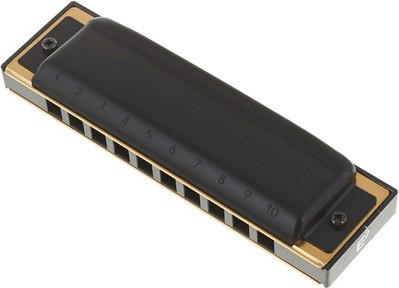

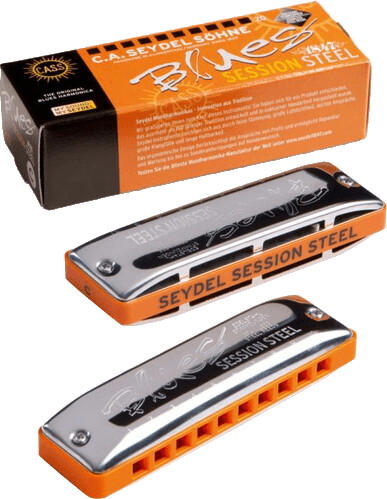
Ease of playing
Some harmonicas are designed with features that make them easier to play, especially for beginners or those with limited hand strength. An excellent choice for a harmonica that prioritizes ease of playing is the Hohner Special 20 Harmonica. This harmonica boasts a unique plastic comb that offers a smooth and comfortable playing experience, reducing friction on the lips. Additionally, the Easttop T008K Blues Harmonica is known for its ergonomic design, making it easier to hold and play for extended periods. Both harmonicas provide airtight construction, enabling effortless bending and producing vibrant, rich tones without requiring great effort from the player.


Comfort of use
The design and construction of a harmonica greatly impact how comfortable it is to play and hold. One excellent option that promotes comfort is the Hohner Special 20 Harmonica. Featuring ergonomic covers and rounded edges, it ensures a pleasant playing experience, especially during long sessions. For players looking for an even more comfortable option, the Lee Oskar Major Diatonic Harmonica is constructed with a recessed top plate, making it extremely comfortable and easy to hold. Additionally, the Suzuki Promaster Valved Harmonica stands out for musicians seeking enhanced control and airtightness, thanks to its valve system that eliminates any unwanted air leakage. Remember, comfort is crucial to fully enjoying and mastering your harmonica skills.



Suitable for beginners
First, it is important to look for a diatonic harmonica, as these are the most common type and easiest to learn on. The Hohner Special 20 and Lee Oskar Major Diatonic are great options for beginners due to their durable construction and smooth, responsive playing. These harmonicas are also available in different keys, allowing beginners to learn and practice different songs. Additionally, the Seydel Blues Session Steel and Suzuki Bluesmaster harmonicas are known for their excellent sound quality and responsive reeds, making them ideal choices for beginners who are looking for a harmonica that is both durable and offers great tonal qualities. Lastly, the Hohner Marine Band Classic and Lee Oskar Melody Maker are designed specifically for beginners interested in playing melodies and single notes, as they feature a lay-out that makes it easier to play individual notes accurately.
Suitable for intermediate players
Suitable for intermediate players, the best harmonicas offer a balance between affordability, quality, and versatility. One option to consider is the Hohner Special 20 Harmonica, known for its responsive reeds and airtight design. This harmonica is made with a durable plastic comb and features reed plates made of brass, providing a warm and rich tone. Another option is the Lee Oskar Major Diatonic Harmonica, which offers a plastic comb to resist swelling, airtight construction, and replacement reed plates in multiple keys. These harmonicas are designed for players seeking a reliable instrument with excellent playability and tonal options.



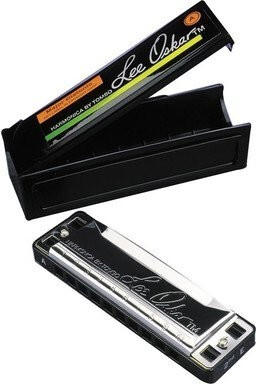
Suitable for advanced players
For advanced players, it is essential to choose a harmonica that offers professional-grade quality and performance. One such option is the Hohner 270 Super Chromonica, renowned for its exceptional tonal range and smooth playability. With its pearwood comb and phosphor bronze reeds, this harmonica produces a rich and expressive sound, making it ideal for advanced players looking to create intricate melodies and intricate harmonies. Another excellent choice is the Seydel Deluxe Steel Harmonica, known for its stainless steel reed plates that deliver exceptional durability and superb tonal clarity. Its double reed slots enhance bendability, allowing advanced players to achieve greater tonal variety effortlessly. Additionally, the Lee Oskar Major Diatonic Harmonicas deserve a mention as they are specifically designed to cater to the needs and demands of advanced players, providing a solid and responsive performance every time. Their replaceable Reed Plates and rugged construction ensure longevity, making them an excellent investment for seasoned players.

Suitable for professional use
One such option is the Hohner Marine Band 1896 Harmonica. This harmonica is designed with a durable wooden comb and features traditional reed plates for a classic sound. It also offers a wide range of key options, allowing professionals to easily switch between different music styles and genres.
Additionally, professional harmonicas often include advanced features to enhance the playing experience. The Lee Oskar Major Diatonic Harmonica is an excellent choice, known for its replaceable reed plates which allow easy customization and maintenance. With its professional-grade construction, this harmonica delivers powerful sound projection and in-tune playing. Moreover, the Seydel 1847 Silver Harmonica presents another exceptional option for professionals with its corrosion-resistant stainless steel reeds. This harmonica boasts superior airflow, long-lasting durability, and a brilliant sound quality suitable for even the most demanding professional musicians.


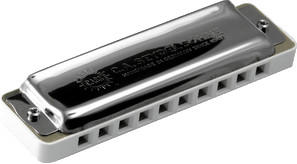
Packaging
Opting for harmonicas that come with durable and protective packaging ensures that your instrument stays secure during transport and storage. It is recommended to choose harmonicas that are packaged in sturdy materials such as hardshell cases or padded boxes. This ensures that the delicate reeds and wooden comb of the harmonica are safeguarded from potential damage caused by impacts or drops.
One example of a harmonica that comes with excellent packaging is the Hohner Marine Band Crossover Harmonica. It features a premium hardshell case that provides maximum protection for the instrument. The case is designed with a soft plush interior to keep the harmonica in place and protect it from scratches or dents. Another option is the Lee Oskar Major Diatonic Harmonica which comes with a padded plastic case. The case has a snug fit to keep the harmonica secure and includes a snap lock to ensure it remains closed during transportation. These packaging options provide considerable protection for the harmonicas, making them solid choices when selecting an instrument.

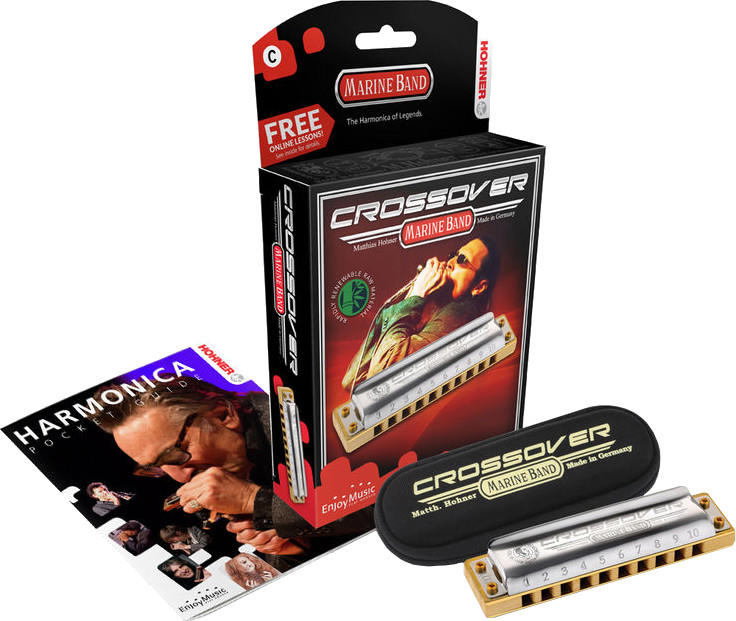


Included accessories
Some harmonicas may come with a carrying case or pouch for easy transport and protection. A notable example is the Lee Oskar Harmonicas Kit, which includes a portable hard case that can hold up to five harmonicas. Additionally, some harmonicas may include a cleaning cloth or tool to help maintain the instrument's quality over time. The Hohner Special 20 Harmonica Set is a great example of a product that includes a cleaning cloth to ensure optimal performance.
Other harmonicas may include a harmonica holder or stand, which is particularly helpful for hands-free playing. The Suzuki Harpmaster harmonica comes with a sleek and sturdy harmonica holder that allows you to secure the instrument in place while playing other instruments simultaneously. Furthermore, some harmonicas may come with an instructional booklet or DVD, making it easier for beginners to learn how to play. The Fender Blues Deluxe Harmonica Set not only includes a handy instructional booklet but also a CD to guide aspiring players in mastering the harmonica. When comparing products in this category, it's essential to consider the specific accessories that are important to you and choose a harmonica that meets your needs.
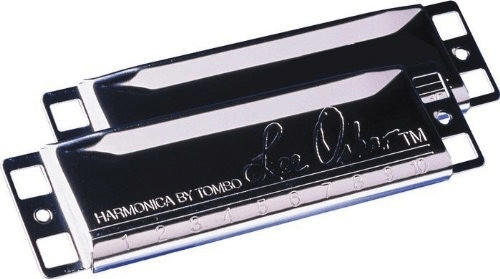
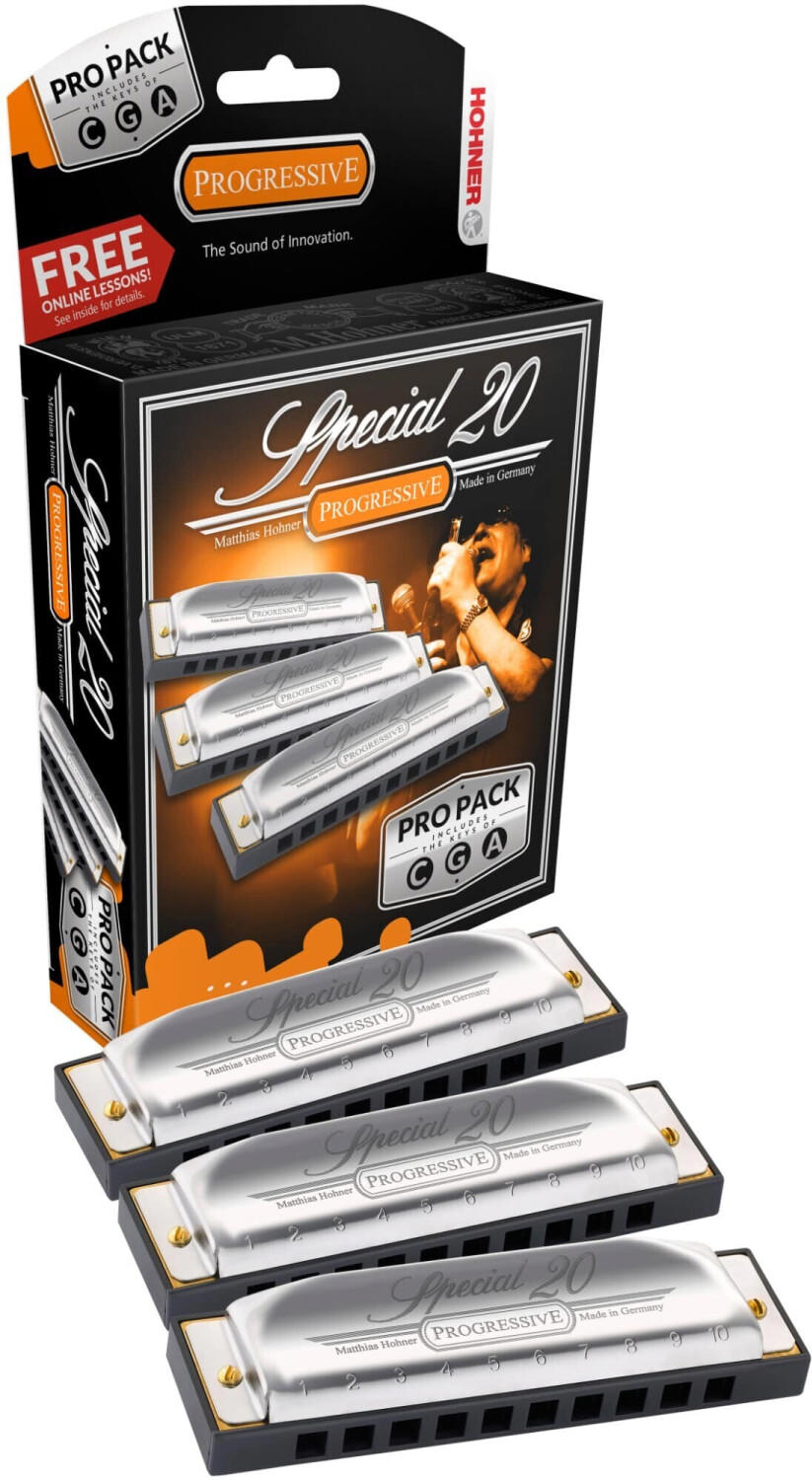
Compatibility with amplifiers/effects
Not all harmonicas are compatible with amplifiers and effects, so it is crucial to choose one that can work seamlessly with these devices. One example of a harmonica that is suitable for use with amplifiers and effects is the Hohner Special 20. This harmonica features a plastic comb that is resistant to moisture, making it perfect for amplified playing. Additionally, its airtight design allows for smooth playability and optimal response, even when paired with effects such as distortion or delay. Another option is the Lee Oskar Major Diatonic harmonica, which is designed specifically for use with amplifiers. Its plastic comb and perfectly tuned reeds ensure a crisp and clear sound, ideal for amplification and effects. Both of these harmonicas are great options for those looking to enhance their sound using amplifiers and effects.



Portability/Storage
Most harmonicas are compact and lightweight, making them easy to carry around in a pocket or a small bag. However, some models take portability a step further with innovative designs. For instance, the Lee Oskar Major Diatonic Harmonica features a sleek, compact size and a removable cover plate that allows for easy cleaning and maintenance, while the Hohner Marine Band Deluxe Harmonica comes with a wooden case that provides extra protection during transportation. On the other hand, if you are looking for a harmonica that doesn't compromise on sound quality despite its smaller size, the Suzuki Manji M-20 Harmonica utilizes a unique resin comb design that enhances its portability without sacrificing tonal richness. It's important to choose a harmonica that suits your portability and storage needs, ensuring that you can take your harmonica anywhere you go without hassle.

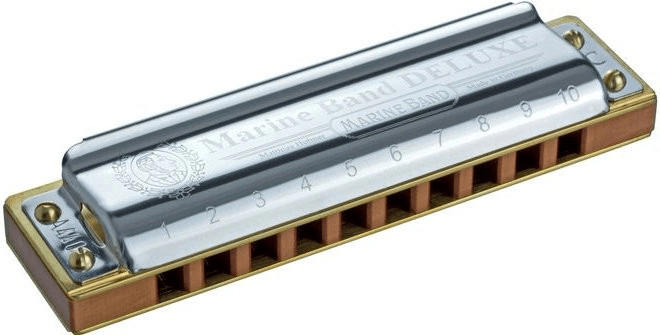

Key layout/Placement
Different harmonicas have different layouts of their keys, also known as hole numbers. The most common layouts are 10-hole harmonicas and 12-hole chromatic harmonicas. The 10-hole harmonicas are usually designed for players who are just starting out and are more compact and easier to handle. Products like the Hohner Special 20 and Lee Oskar Major Diatonic are excellent options when looking for a harmonica with a 10-hole key layout. On the other hand, 12-hole chromatic harmonicas are the perfect choice for more experienced players looking to explore a wider range of sounds. The Hohner Chrometta 12 and Suzuki SCX Chromatic Harmonica are great examples of 12-hole chromatic harmonicas available on the market.



Reed responsiveness
It refers to how quickly and accurately the reeds respond to your breath, which greatly affects your ability to play notes and produce vibrant tones. There are different types of reed materials available, such as brass, phosphor bronze, and stainless steel, each with its own unique responsiveness. For example, the Hohner Special 20 Harmonica is known for its highly responsive brass reeds that provide excellent control and richness in sound. Another option is the Lee Oskar Harmonica, which features specially designed phosphor bronze reeds that offer a dynamic response and allow for bending and overblowing techniques with ease.



Range/Number of octaves
The range refers to the lowest and highest notes that the harmonica can produce, and a wider range allows for more versatile and diverse playing styles.
One excellent example of a harmonica with a wide range is the Hohner Super Chromonica 270/48. This chromatic harmonica features a three octave range (from C3 to C6), making it suitable for playing various genres and melodies. Another option to consider is the Suzuki Promaster MR-350V, which offers a four octave range (from C3 to C7) and is praised for its bright and clear sound.
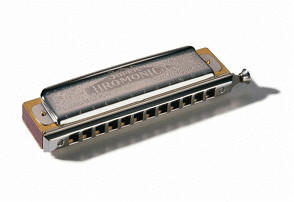
These harmonicas are part of the higher-end segment and are suitable for professional musicians or serious players looking for the best possible range and musical capabilities.
Adjustable reed plates
One outstanding example is the Lee Oskar Harmonicas, known for their easy-to-adjust reed plates. These harmonicas feature reed plates that can be adjusted for either less volume or more responsiveness, ensuring a personalized playing experience. Another renowned brand is Hohner Marine Band Deluxe Harmonicas, which offer screw-mounted reed plates for easy adjustments. Additionally, the Seydel 1847 Classic Harmonicas are equipped with stainless steel reed plates, allowing for precise tuning and extended durability. Overall, adjustable reed plates are a fantastic feature to look for when searching for the best harmonicas.

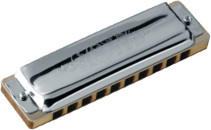
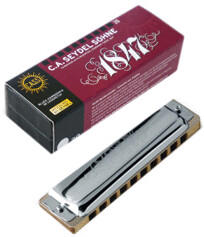
Performance in different musical genres
This aspect largely depends on the type of harmonica and the key it is tuned in. Diatonic harmonicas, like the Hohner Special 20 Classic Harmonica, are great for playing blues and rock due to their ability to bend notes easily. For jazz and classical genres, a chromatic harmonica like the Hohner Chromonica 270 Deluxe is more suitable as it allows for seamless playing across all 12 keys. Meanwhile, if you're into country or folk music, the tremolo harmonicas, such as the Suzuki Promaster Valved MR-350V, are excellent choices for their rich vibrato effect. Lastly, for those interested in playing in multiple genres or experimenting with various musical styles, a versatile harmonica like the Lee Oskar Harmonica Major Diatonic offers a range of keys and tonal possibilities.



Volume projection
Volume projection refers to how loud the harmonica can sound when played. Some players might prefer a harmonica with a loud volume projection to cut through in live performances or when playing with a band, while others might prefer a mellower sound for more intimate settings.
One example of a harmonica with excellent volume projection is the Hohner Special 20. This model features reed plates made of brass, which contribute to its loud and powerful sound. Another option is the Lee Oskar Major Diatonic, known for its clear and strong projection due to its precise reed slot alignment. In terms of volume projection, there are also harmonicas designed specifically for playing the blues, such as the Hohner Marine Band Blues Harp. These harmonicas are optimized to produce loud and raucous tones, ideal for blues musicians who want their sound to be heard in even the rowdiest of settings. However, for those looking for a softer sound and a more mellow volume projection, the Seydel 1847 Silver offers a low-volume alternative with its stainless steel reeds and precise reed shape.


Wind-saving techniques
These techniques help improve the efficiency of the instrument, allowing for longer playing times and reducing the need to constantly blow air into the harmonica. One such technique is the use of a comb design with airtight construction, like the Hohner Marine Band Classic. This harmonica boasts precision-engineered pearwood comb and seamless covers, ensuring minimal air leakage. Additionally, harmonicas with ergonomic cover designs, such as the Lee Oskar Major Diatonic, enhance wind-saving capabilities by reducing air loss through the sides of the harmonica. These wind-saving harmonicas provide exceptional airflow control and responsiveness, allowing musicians to achieve clear notes while conserving breath.
Cleaning/maintenance requirements
Some harmonicas require more frequent cleaning and maintenance than others, depending on the materials used and the playing conditions. It is recommended to look for harmonicas that are easy to disassemble and clean, as they can accumulate debris and moisture with regular use.
Some harmonica models that offer ease of cleaning and maintenance include the Hohner Special 20, which features a plastic comb that can be easily removed for cleaning, and the SEYDEL Blues Session Steel, which has stainless steel reeds that are resistant to corrosion and can be wiped clean. Another option is the Lee Oskar Major Diatonic, which has reed plates that can be easily removed for cleaning and maintenance. For these models, it is suggested to use gentle cleaning solutions specially designed for harmonicas, such as the Hohner Harmonica Cleaning Set, which includes a soft brush and cleaning cloth for thorough maintenance.


Consistency in production
It ensures that the instrument you receive will be of reliably high quality in terms of tone, durability, and overall performance. Some harmonica brands have earned a reputable reputation for consistently producing top-notch harmonicas.
One such example is the Hohner Special 20 harmonicas. These diatonic harmonicas feature a durable plastic comb that is resistant to moisture and helps reduce swelling, ensuring consistent airtightness. The recessed brass reed plates guarantee airtightness and project a rich and full sound. Another reliable option is the Suzuki Bluesmaster harmonicas. These harmonicas offer consistently precise and responsive reeds for great playability and excellent tonal quality. Both of these models have consistent production value and are widely recognized for their reliable performance.



It's worth noting that many established harmonica brands offer different models to cater to various playing styles and preferences. For instance, Hohner offers a range of harmonicas, including the Hohner Marine Band, Hohner Golden Melody, and Hohner Meisterklasse. Each model has specific design features and professional specifications, catering to different genres and playing techniques. Similarly, Suzuki offers harmonica models like the high-end Suzuki Manji and the budget-friendly Suzuki Folkmaster. These models suit different musical styles and budget ranges, all while ensuring consistent and reliable production values.
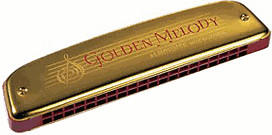

Connectability with other instruments
Many harmonicas are designed to be compatible with specific musical genres, styles, or playing techniques. For blues musicians, the Hohner Special 20 is an excellent choice as it offers a smooth, yet powerful sound that blends seamlessly with guitars and other blues instruments. For those venturing into jazz, the Seydel 1847 Silver is a top-quality option, boasting superior airtightness for precise head articulation, making it an ideal choice when playing alongside saxophones and pianos. Another group of harmonicas that offer great connectability are the tremolo harmonicas, such as the Hohner Echo Harp. These deliver a twangy timbre and are perfect for folk music, particularly when accompanying acoustic guitars and banjos.



Price
The price of a harmonica can vary greatly depending on the brand, build quality, and extra features. If you're looking for an affordable option, you might consider the Hohner Special 20 which offers great sound quality and is reasonably priced. For those seeking something a bit more high-end, the Seydel 1847 Classic is an excellent choice with its stainless steel reeds and durable construction. Alternatively, beginners who are just starting out might want to start with a more budget-friendly option like the Lee Oskar Major Diatonic, which offers good quality at an affordable price. Remember, the price of a harmonica often reflects the overall build quality, durability, and features offered. Choose one that best suits your budget and needs.



Variety of brands
Each brand has its own unique qualities and reputations. For example, Hohner is known for producing high-quality and durable harmonicas, with their Marine Band harmonicas being a popular choice among professionals. On the other hand, Lee Oskar harmonicas are praised for their versatility due to their unique tuning system, making them ideal for different genres of music. Other popular brands worth considering include Seydel and Suzuki.
In terms of specific products, the Hohner Marine Band Classic 1896 is a highly recommended choice. With a rich history dating back to the 19th century, this harmonica is a favorite among seasoned players due to its exceptional tonal qualities. For those seeking versatility, the Lee Oskar Major Diatonic Harmonica is an excellent option. It features a unique tuning system that allows players to easily utilize it in a wide range of musical genres. Ultimately, the choice of brand and specific product comes down to personal preference and the desired sound qualities.